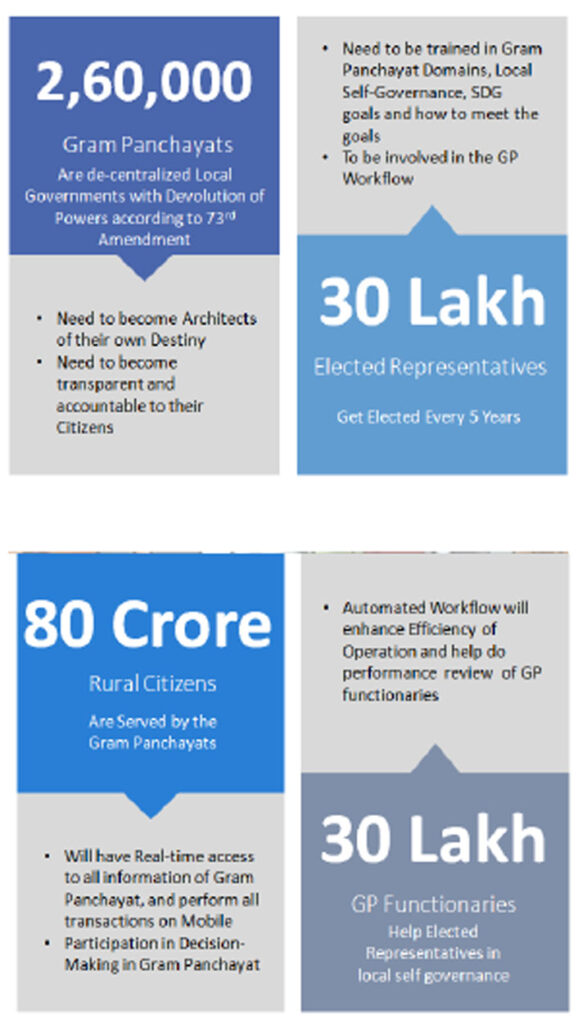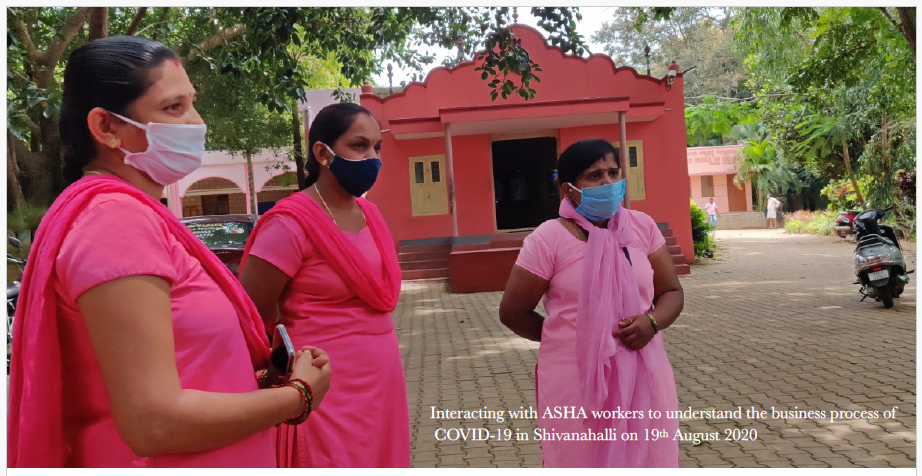
Gram Panchayat Eco System
Gandhi advocated for the Panchayati Raj system as the foundation
of India’s political system. He believed that a decentralised form of
government will make each village responsible for their own affairs. This makes it easier to address local agendas and priorities. The clear
majority of the Indian population have lived and still lives in the rural
setting. As citizens of a democratic nation, it is the responsibility of the government to involve the people in the process of decision making for economic-social development, and justice.
In India, we currently have more than 2,60,000 Gram Panchayats.
These Gram Panchayats are the centers of development for rural India.
Only when we can make the elected leaders understand that they are the drivers of their destiny, the villages of India will attain its potential.
Also, Mahatma Gandhi had a dream of an ideal village where the
community had to have enough housing with proper ventilation for all the citizens, and the houses were to be constructed of a material that was found within 5 miles radius of the village. There will be proper sanitation facility for the citizens, the citizens should be able to grow their own food in their fields or gardens, and grow cotton for clothing.
The village should have proper roads and drainages free of dust. It
would have wells, worship places, parks, forest, a Panchayat office and a community hall for public gatherings. The village should have
infrastructures such as health centers and primary and secondary schools for education. This was Gandhi’s vision of an ideal village for India.
To achieve this dream for Indian villages, we are looking at effectively
training 30 lakhs Elected Representatives, 30 lakh Gram Panchayat
functionaries, and 800 million citizens to help achieve the United
Nations Sustainable Development Goals (UNSDGs), and Gandhi’s
dream of an ideal village.




